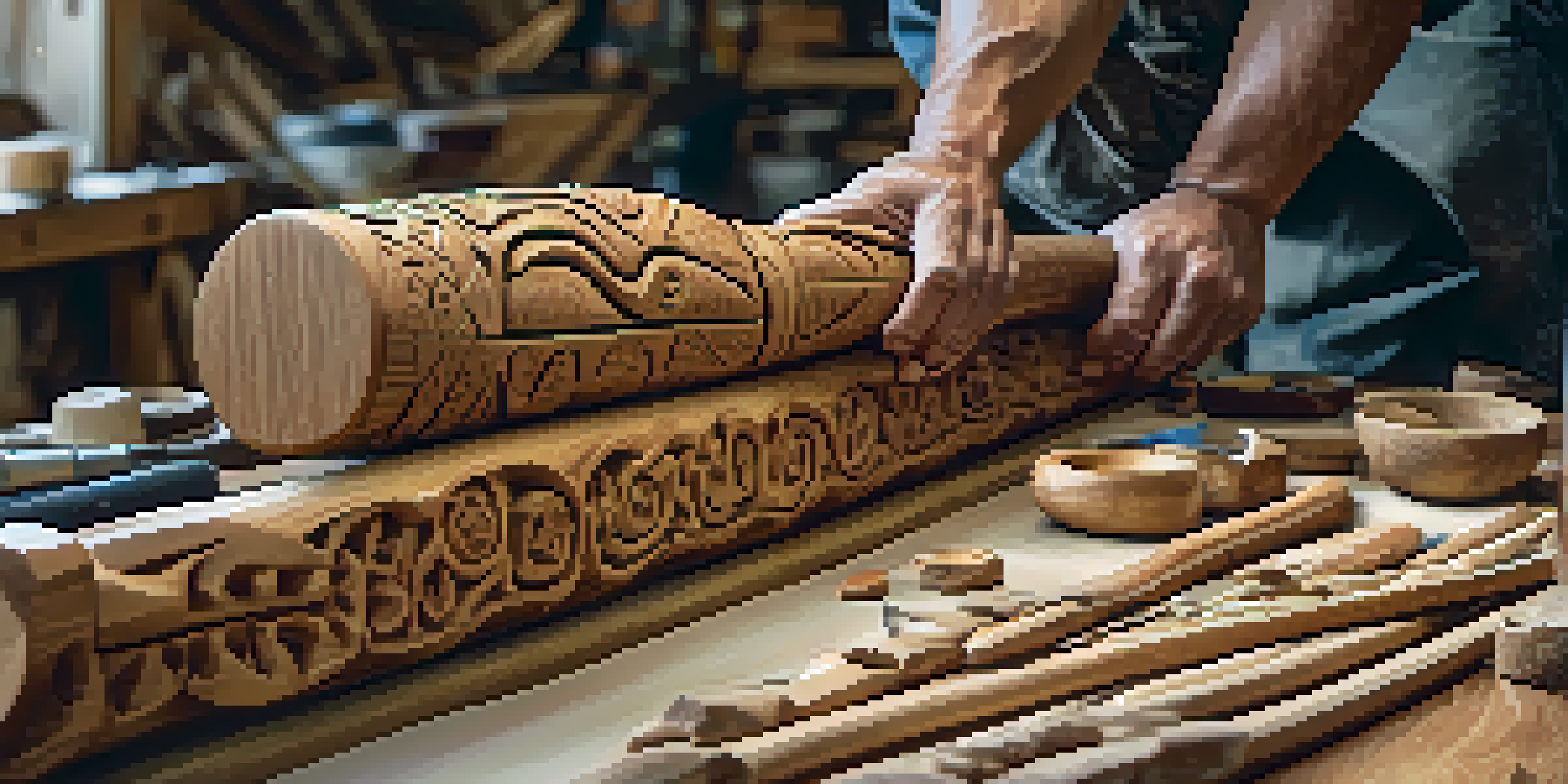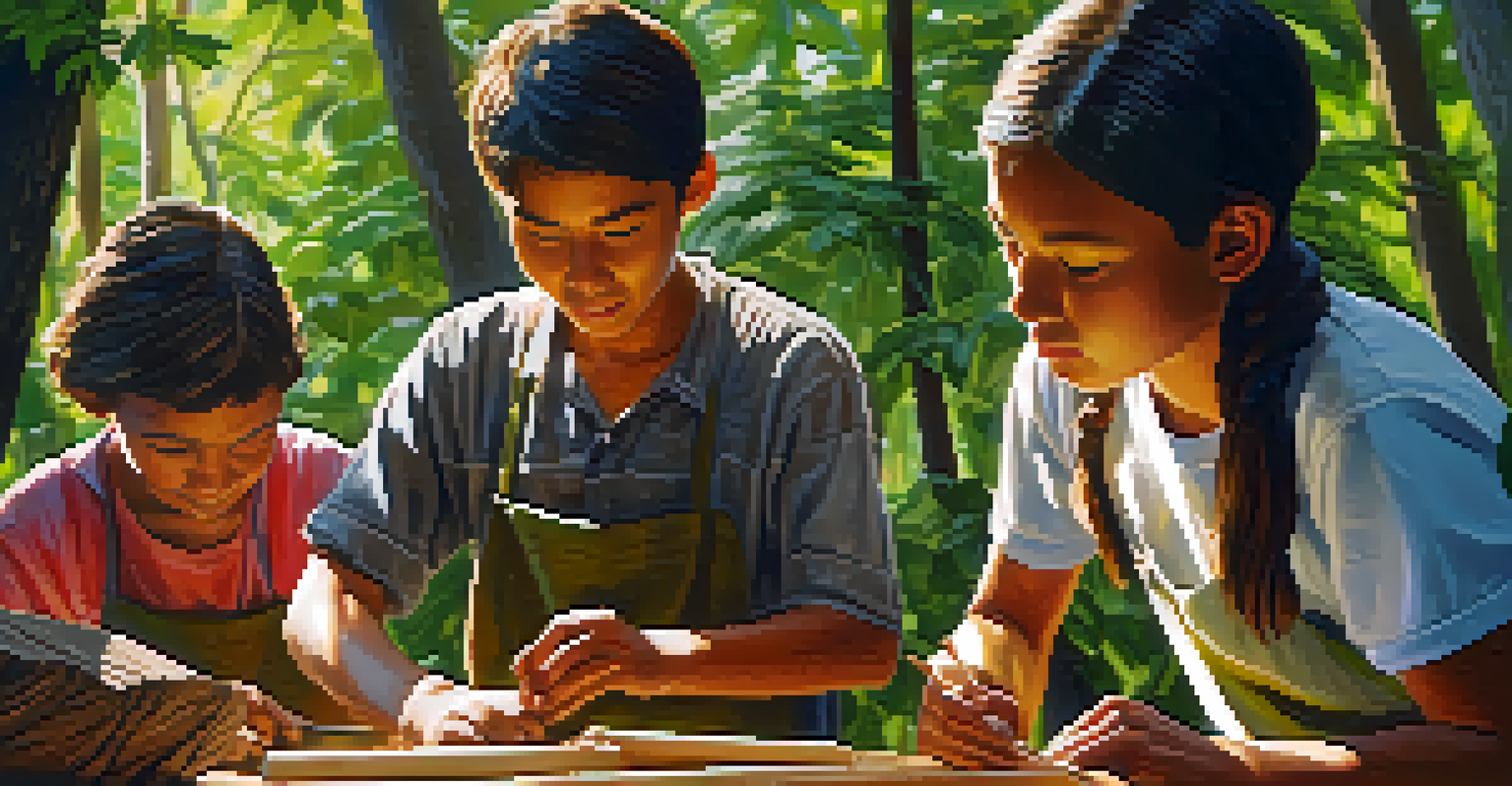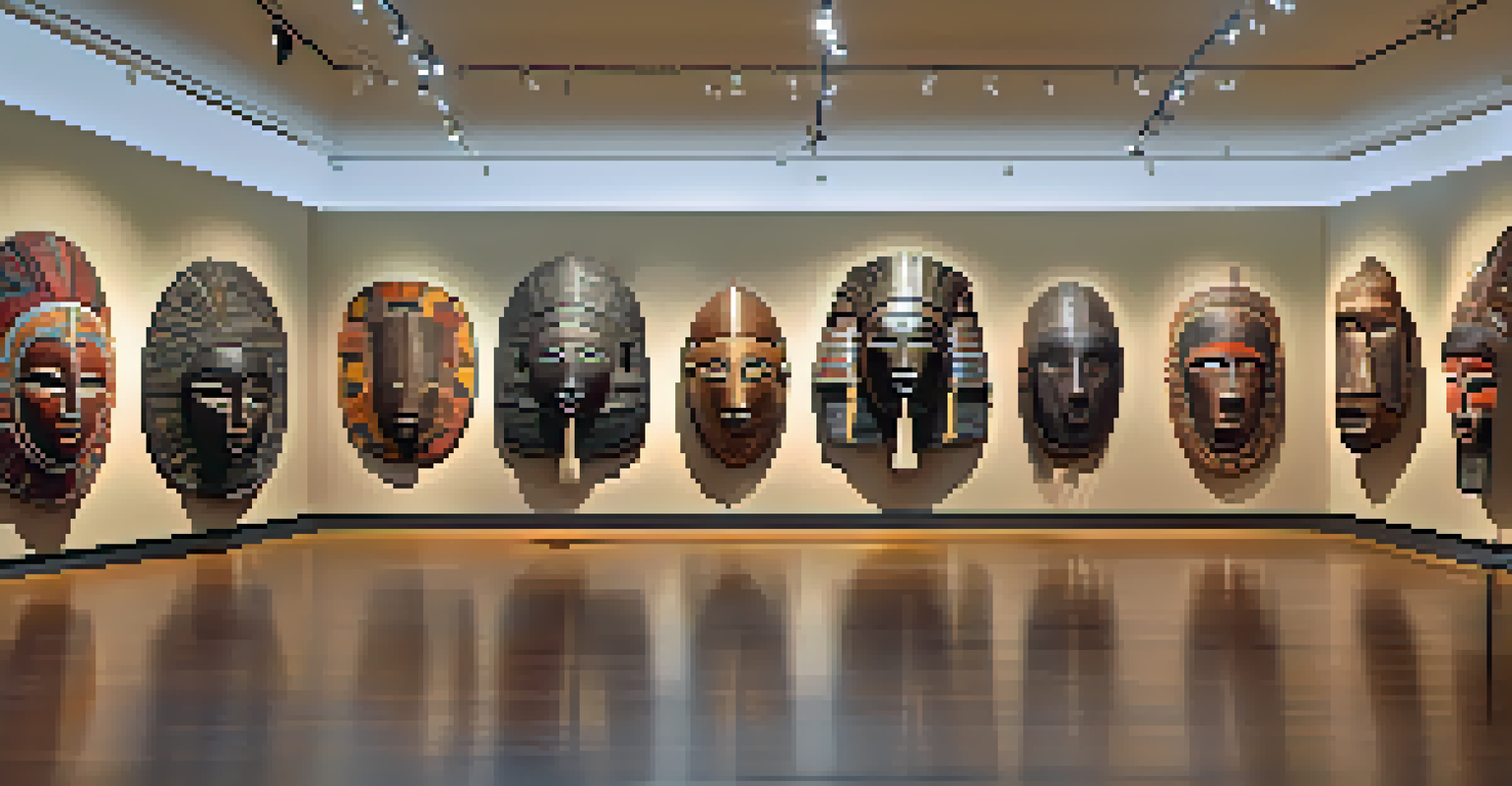The Connection Between Carving and Ancestral Heritage

Understanding the Art of Carving in Cultural Contexts
Carving is more than just a craft; it's a profound expression of cultural identity. Many communities use carving to tell stories, capture traditions, and connect with their heritage. From intricate wooden sculptures to stone carvings, each piece often holds historical significance that resonates with the carver's ancestry.
Art is the most beautiful of all lies.
For example, Indigenous tribes in North America often carve totem poles that narrate their lineage and cultural beliefs. These carvings serve as visual stories, connecting present generations with their ancestors. This interplay between art and history emphasizes the importance of carving in preserving and celebrating cultural narratives.
Moreover, the materials used in carving can also reflect ancestral ties. Local woods or stones might be chosen not just for their beauty but also for their historical significance. This choice reinforces the bond between the artist and their heritage, making each piece a testament to both skill and ancestry.
The Role of Carving in Storytelling and Tradition
Carving serves as a medium for storytelling, where each cut and contour can convey rich narratives. Many cultures have relied on this art form to pass down folklore and life lessons through generations. This storytelling aspect makes carving not just an artistic endeavor but a vital part of cultural transmission.

Take the example of African masks, often carved with symbolic meanings that reflect the community's beliefs and values. These masks are used in rituals and ceremonies, serving as a bridge between the past and present. The stories they embody help to keep ancestral traditions alive, ensuring that younger generations remain connected to their roots.
Carving as Cultural Expression
Carving serves as a profound expression of cultural identity, preserving stories and traditions that connect communities to their heritage.
Through carving, artisans can express their identity and share their heritage with the world. Whether through public exhibitions or personal collections, these carved pieces become tangible links to the stories and traditions of their ancestors, fostering a deeper appreciation for cultural diversity.
Carving Techniques Across Different Cultures
The techniques used in carving can vary significantly from culture to culture, each reflecting unique skills and practices. For instance, Japanese woodblock printing, which involves intricate carving techniques, has been developed over centuries and is deeply rooted in Japanese culture. This precision and attention to detail highlight a respect for tradition that is often passed down through generations.
Every piece of art creates a story, and every story has a history.
In contrast, Polynesian carving often incorporates bold patterns and motifs that reflect the natural world. This style not only showcases the artistic talent of the carvers but also emphasizes their connection to the environment and their ancestors. Each carving technique, therefore, carries with it a legacy of knowledge and artistry that speaks to the carver's heritage.
Understanding these diverse techniques allows us to appreciate the depth of cultural significance embedded in carving. Each style is a reflection of the values, beliefs, and history of the people who practice it, making carving a vital form of cultural expression.
The Emotional Connection Between Carvers and Their Work
Carvers often share a deep emotional connection to their work, one that transcends the physical act of carving. For many artisans, each piece is not just a product but a reflection of their identity and heritage. This emotional investment can be seen in the way they choose their materials, often favoring those with personal or cultural significance.
For example, a carver might select wood from a tree that holds personal memories or from a location tied to their ancestry. This choice can imbue the artwork with a sense of nostalgia and belonging, making each carving a personal homage to their lineage. Such connections elevate the act of carving from craft to a heartfelt tribute.
Emotional Ties to the Craft
Carvers often share a deep emotional connection to their work, with each piece reflecting their identity and personal history.
The process of creating also allows carvers to engage in a form of meditation, where they can reflect on their lineage and the stories they wish to convey. This emotional journey enhances the artistry of carving, making each piece not only a visual delight but also a vessel of personal and cultural history.
Carving as a Medium for Cultural Preservation
In today's rapidly changing world, carving plays a crucial role in cultural preservation. As globalization spreads, many traditional practices risk being lost, but carving serves as a tangible reminder of cultural identities. Artisans often take it upon themselves to keep their heritage alive by teaching the next generation the skills and stories behind their craft.
For instance, community workshops focused on traditional carving techniques can foster a sense of pride and continuity among youth. This not only helps to perpetuate the craft but also reinforces the importance of understanding one's ancestral roots. By engaging in these practices, individuals can cultivate a stronger sense of belonging.
Moreover, carved artifacts often find their way into museums and cultural exhibitions, allowing broader audiences to appreciate the significance of these art forms. Such exposure not only honors the artists but also educates others about the diverse cultural landscapes that carving represents, ensuring that these traditions are not forgotten.
The Influence of Modern Technology on Traditional Carving
Modern technology has significantly influenced traditional carving, offering new tools and methods that enhance the craft. While some purists may resist these changes, many artisans find that tools like CNC machines can complement their traditional skills, allowing for greater precision and creativity. This fusion of old and new can breathe fresh life into age-old techniques.
For example, 3D modeling software enables carvers to visualize their designs before making the first cut. This not only streamlines the process but also allows for experimentation that might have been difficult with traditional methods alone. Such advancements can lead to innovative styles that still honor ancestral roots.
Balancing Tradition and Innovation
Modern technology enhances traditional carving techniques, allowing artisans to innovate while maintaining cultural significance.
However, the challenge lies in balancing innovation with tradition. Many carvers strive to maintain the cultural significance of their work while exploring modern techniques. This ongoing dialogue between the past and present ensures that carving remains a vibrant and evolving form of artistic expression.
Celebrating the Future of Carving and Ancestral Heritage
As we look to the future, the connection between carving and ancestral heritage continues to evolve. Emerging artists are finding new ways to express their identities through carving, often blending traditional techniques with contemporary themes. This dynamic interplay not only keeps the art form alive but also enriches the cultural tapestry.
Moreover, the growing interest in sustainable practices has led many carvers to source materials responsibly, reflecting a commitment to both their heritage and the environment. By doing so, they honor their ancestors' connection to the land while ensuring that future generations can also partake in the beauty of carving.

Ultimately, the future of carving is bright, with endless possibilities for innovation while preserving the essence of ancestral heritage. Each new piece created serves as a testament to the resilience of culture and the enduring power of artistic expression, connecting us all to our roots.